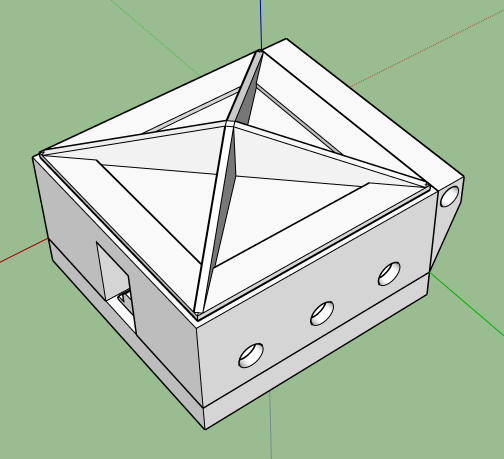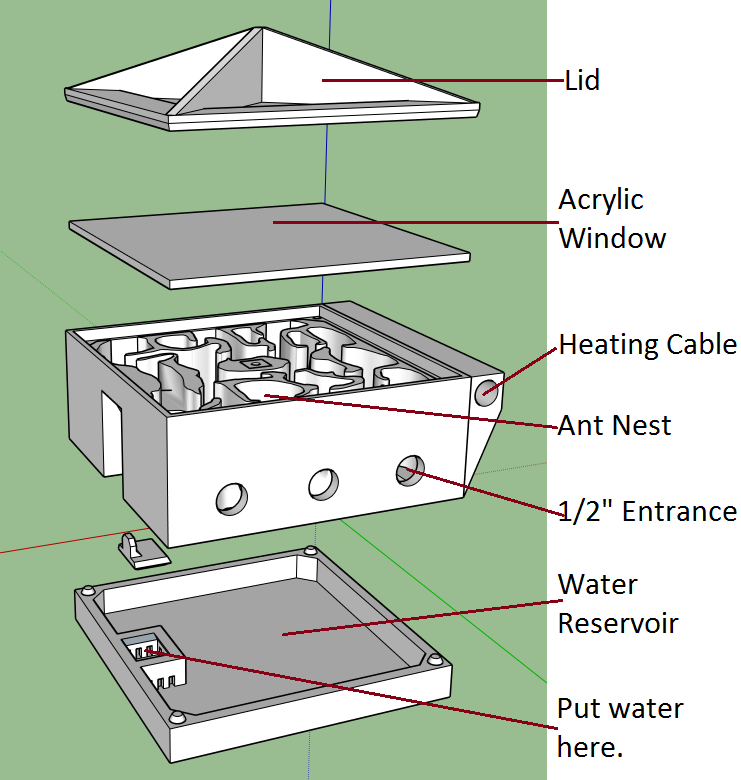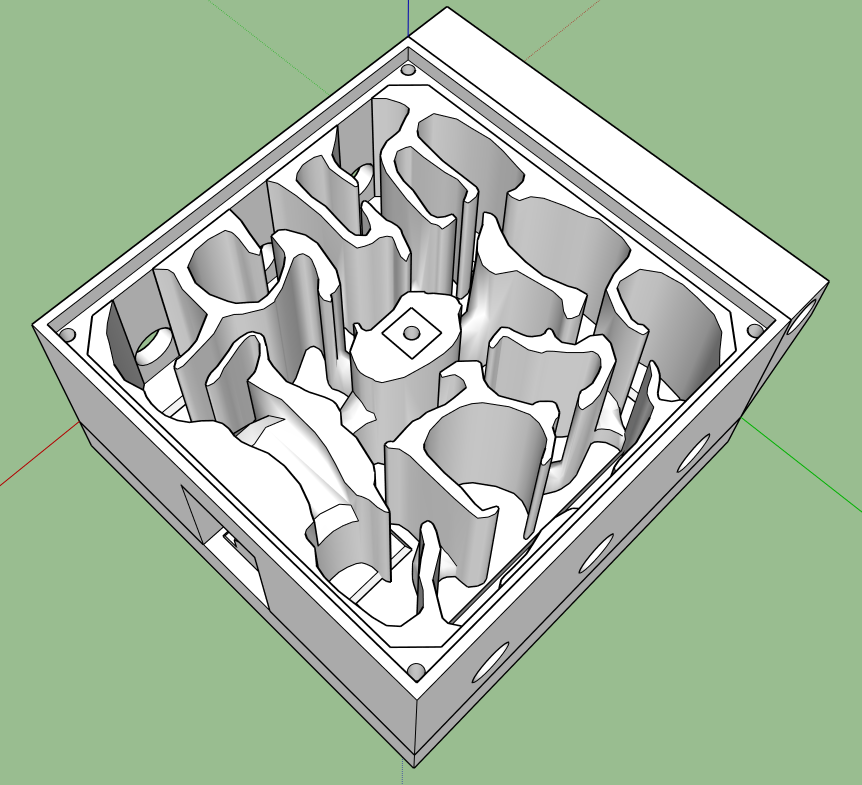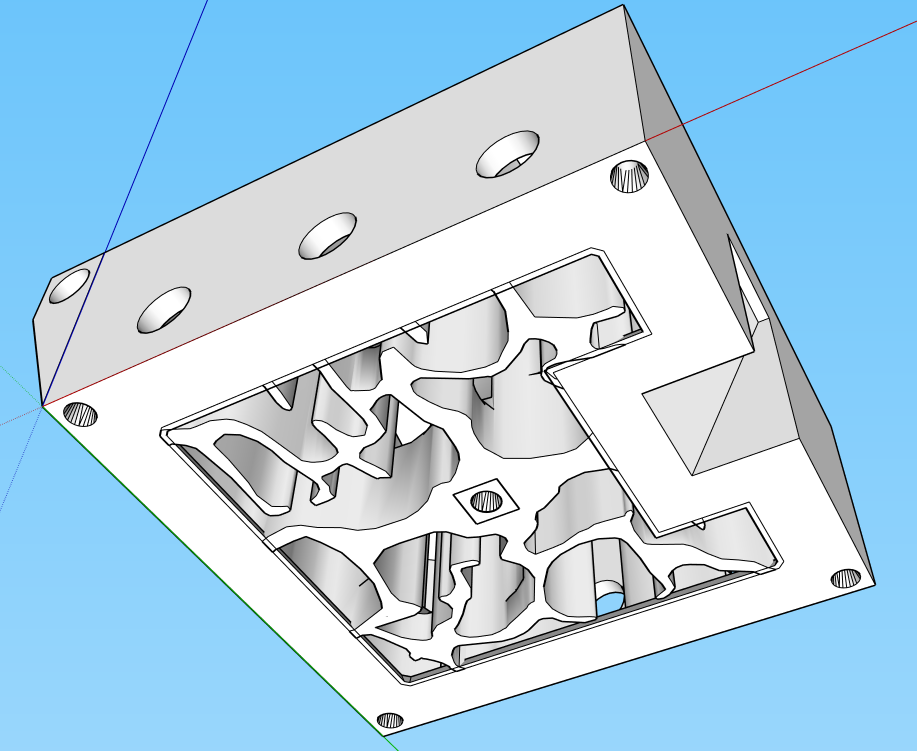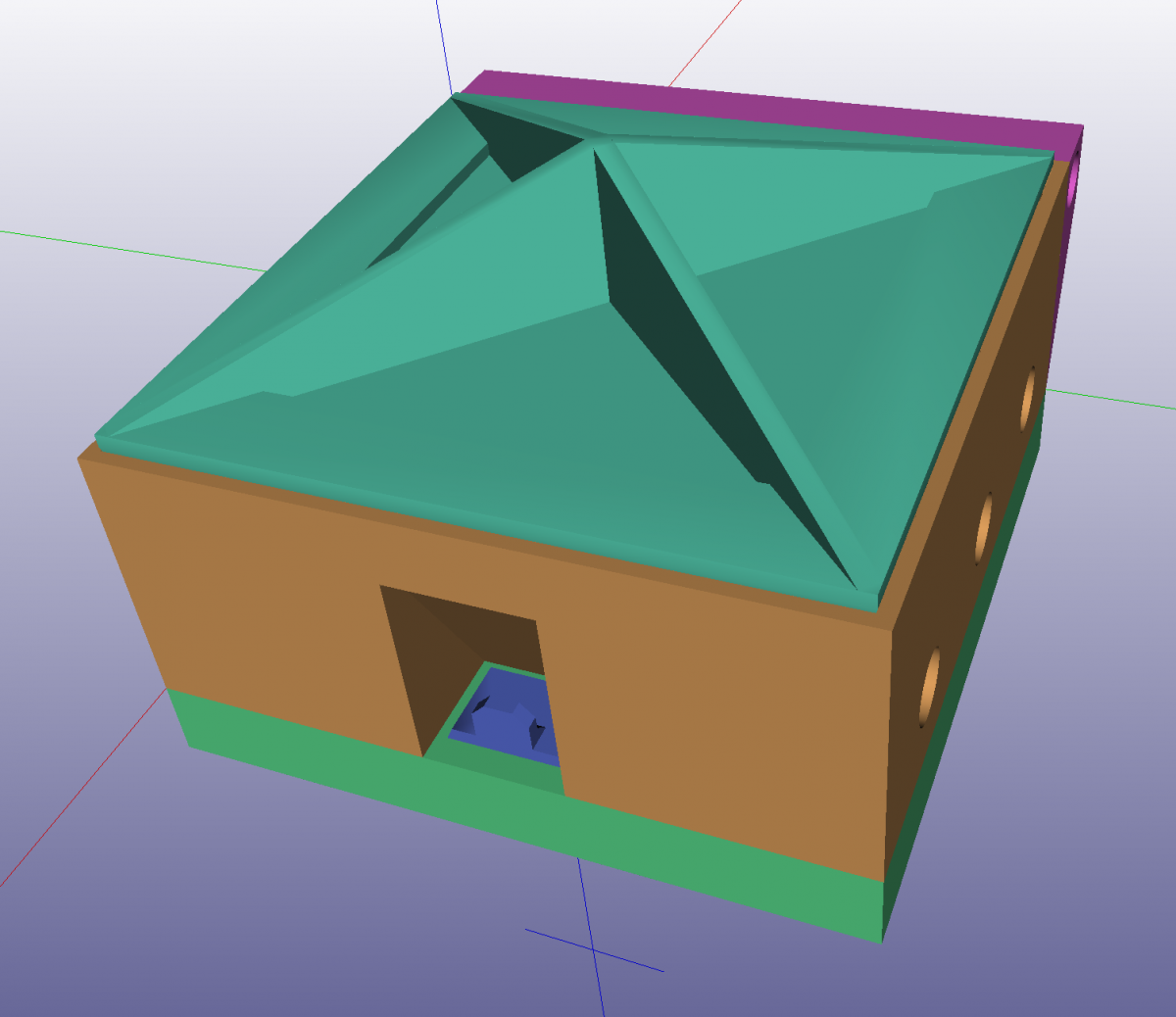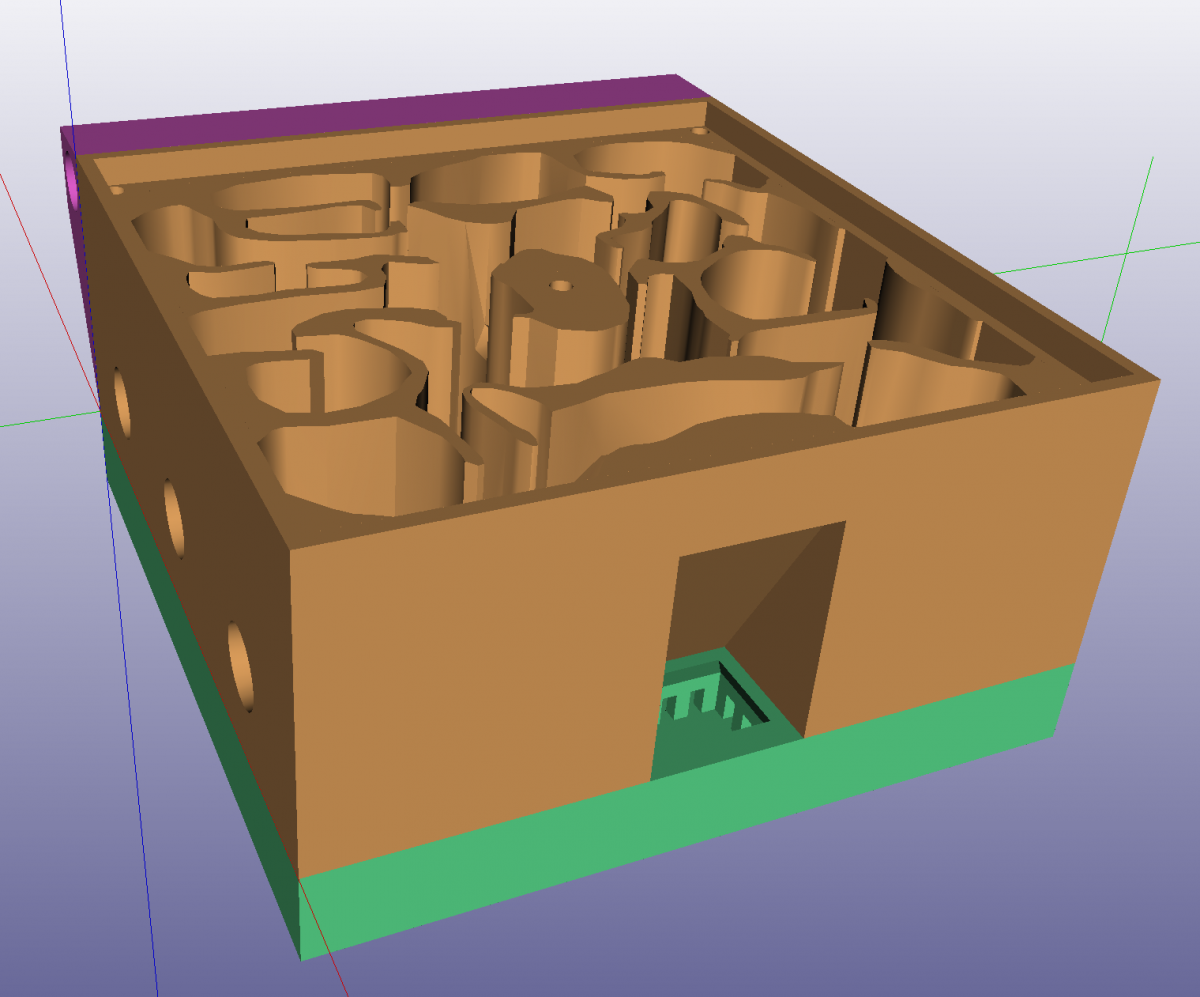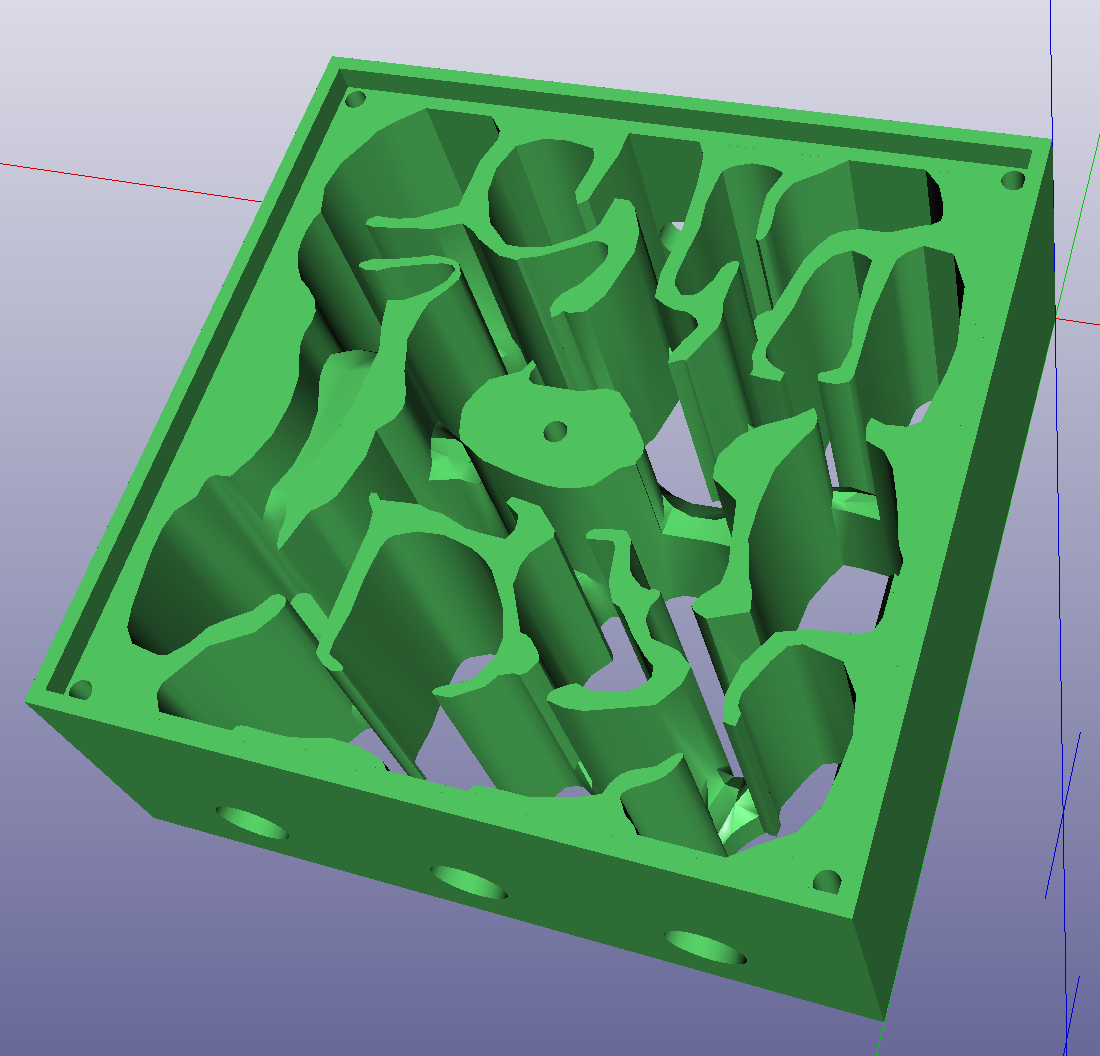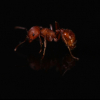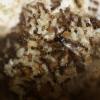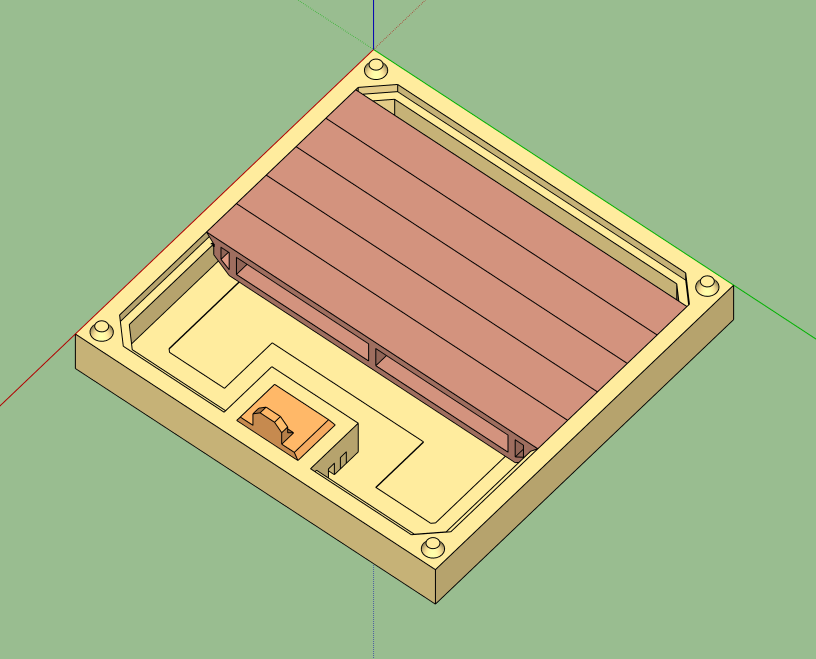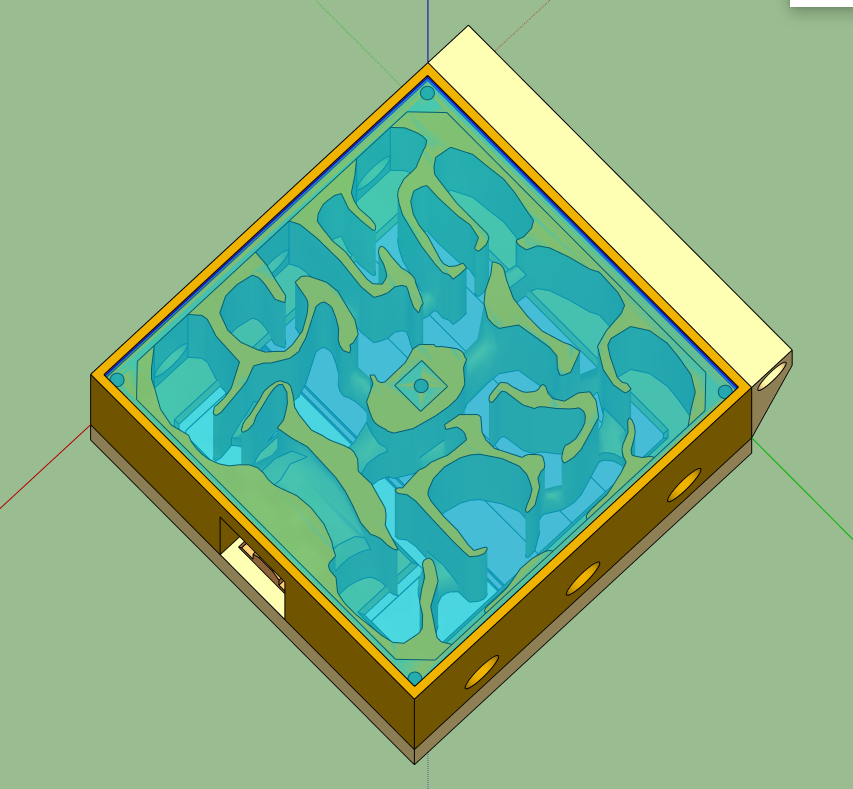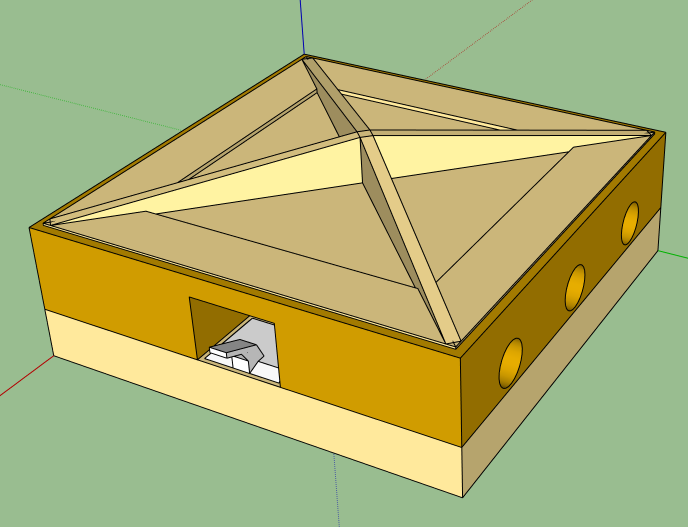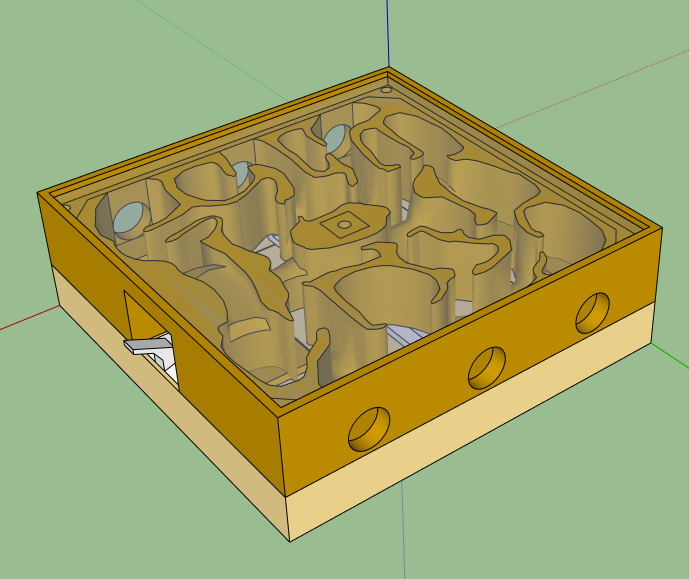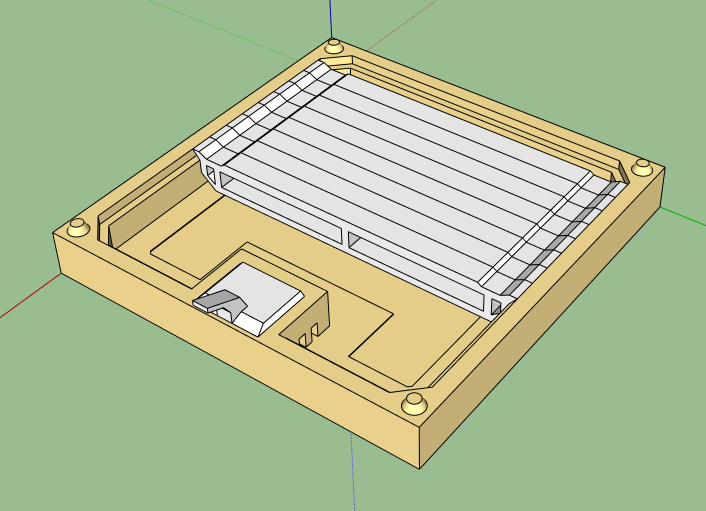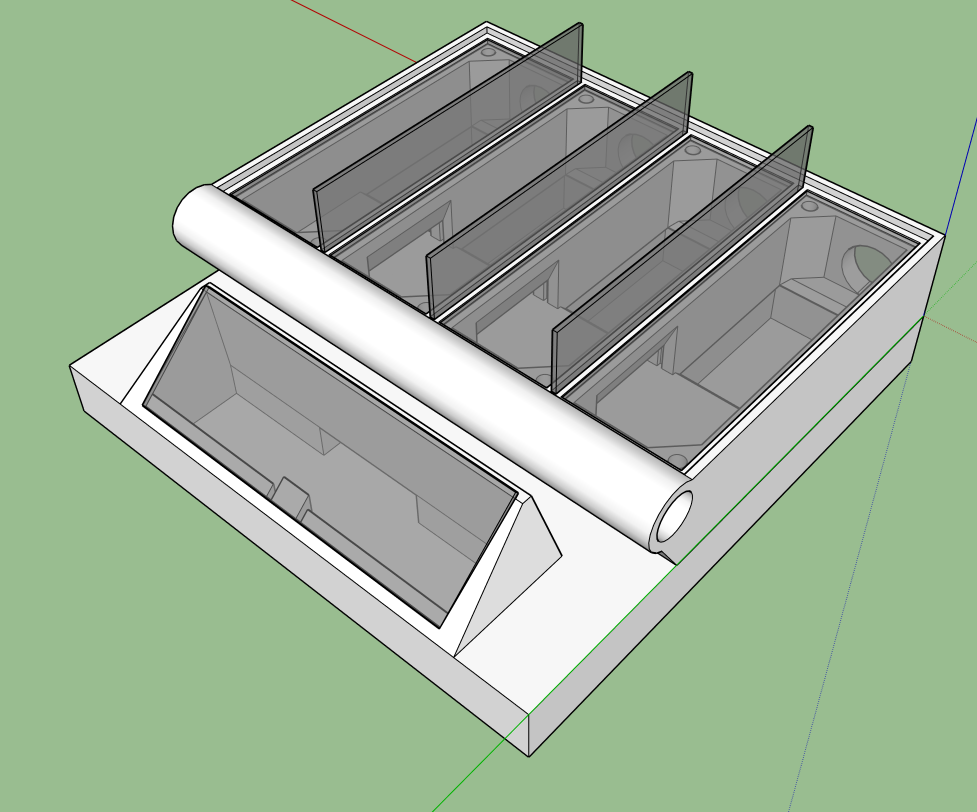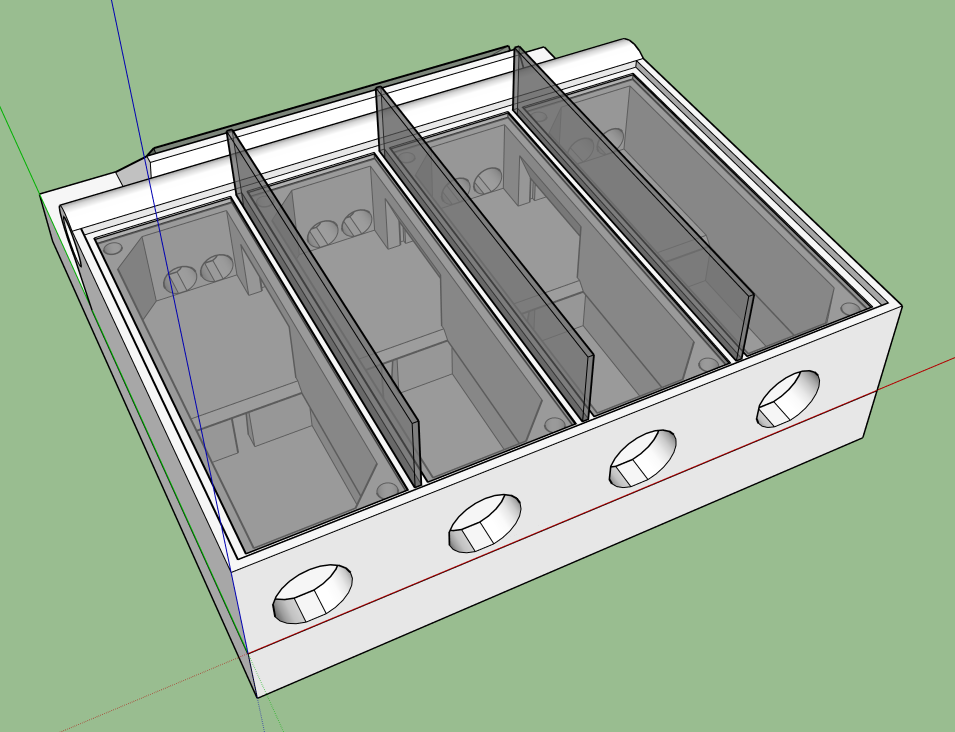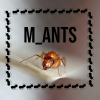Hi all,
I'm designing my first formicarium with the intention of printing it out on a 3D printer (some assembly required) and I wanted to see if anyone had any suggestions for me prior to printing it.
To hydrate the nest, I would remove the small bottom lid at the bottom and poor water into the base. The base would be filled with cotton or a mold-resistant sponge.
Although it's not indicated in any of the pictures, I intend to hot-glue some mesh to the bottom of the main nesting area to separate it as a barrier from the hydration medium.
I haven't figured out a good way to control the humidity yet. I could place some overlapping plates of hard plastic on top of the hydration medium to somewhat reduce the surface area between the hydration medium and the main nesting area. I plan on buying a hygrometer probe and use it to perfecting the humidity level before I introduce the ants.
Any unused entrances would be blocked with cotton-wads, or have tubes that are blocked with cotton wads.
A custom cut 1/8" thick piece of plexy-glass/acrylic would fit at the top of the main nesting area. The lid would rest on the plexy-glass.
In the case of cleaning, the holes in the center and corners of the main nesting area should allow a toothpick to be inserted from underneath and pop off the acrylic. Then a pressure sprayer could do the rest of the job.
Any suggestions on the design?
~dpd




